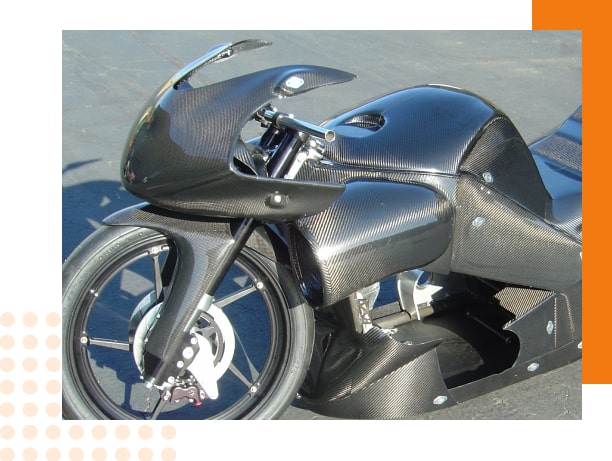At Finishline we believe that quality and fulfilling the customer’s needs is the key ingredient.With every job, whether it is big or small, simple or complex, it is to be completed with perfection.

Upon graduation with a mechanical engineering degree, I started working at an aerospace composite plant. I performed a number of jobs, the main one being a supervisor. This position allowed me to gain extensive knowledge in maintaining and operating uni-directional prepregging machines, fabric impregnation machines, towline/filament infusion machines, hydraulic press machines, and autoclave operations. It was there that I manufactured aerospace-grade prepregs for satellites, military defense products, Lockheed Martin, Hughes, Boeing, NASA, and so on.
After being employed with that company for nine years, there was a sister company that formulated their resin systems for the prepregging process, as well as formulating resin systems for a broad range of markets. It was there that I engineered resin systems. After a few years, the company decided to establish an in-house composite shop. As a result, the company sent me back to school for more composite training. In summary, this training enhanced my abilities to produce carbon fiber parts for the aerospace industry.
At the time, and still to this day, I am deeply passionate about racing. I have always enjoyed riding and racing sport bikes. However, along with racing comes the occasional crash. I soon realized that the stock plastic bodywork on a GSXR sport bike is expensive, especially after multiple incidents. Recognizing that top-level racing groups across industries exclusively use carbon fiber, I thought to myself, “I am immersed in this material every day, so why not make the most of it?”
Drawing from my background knowledge, I began arriving at our company four hours early every day. I dedicated myself to completing my own motorcycle project, constructing the bodywork and structural brackets 100% out of carbon fiber. Shortly after its completion, Cycle News Magazine caught wind of my project and featured it in an article in their magazine. It was an incredibly rewarding experience. Following that, my friends started expressing their interest in having carbon bodywork for their bikes (which, of course, involved a lot of free labor, but that’s what friends are for). As time went on, more and more people approached me to create carbon parts for them. Eventually, it reached a point where I realized I could make a living doing what I love independently. It was then that I decided it was time to start my own company.
We specialize in manufacturing custom one-off prototypes as well as handling small to large-scale production projects. Additionally, we provide composite repair services. At Finishline, we are equipped with state-of-the-art equipment, ranging from small to large, which enables us to manufacture parts of various sizes. Our comprehensive range of composite technologies allows us to transform your ideas into reality, encompassing the entire process from design and development to prototyping, testing, and production. Whether your project is simple or complex, we have the capabilities to meet your needs.
We are committed to providing our customers with top-notch service and delivering high-quality products at an affordable price.
The only place where you’ll get the perfect solution for all your advanced composite and carbon fiber needs.


